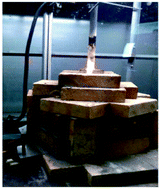
For the preparation of the silica from rice hull ash only dilute acid and hot water are required. The energy requirement to then produce 99.9999% pure silicon is an order of magnitude less than the conventional process and is actually lower than the energy created by burning the rice hulls in the first place. As the carbon dioxide generated by burning biomass is originally fixed from the atmosphere by plants, the carbon footprint for the production of this sustainable silicon is very low.
Read the advanced article in Green Chemistry online now:
A low cost, low energy route to solar grade silicon from rice hull ash (RHA), a sustainable source
Julien C. Marchal, David J. Krug III, Patrick McDonnell, Kai Sun and Richard M. Laine
Green Chem., 2015, Advance Article. DOI: 10.1039/C5GC00622H










